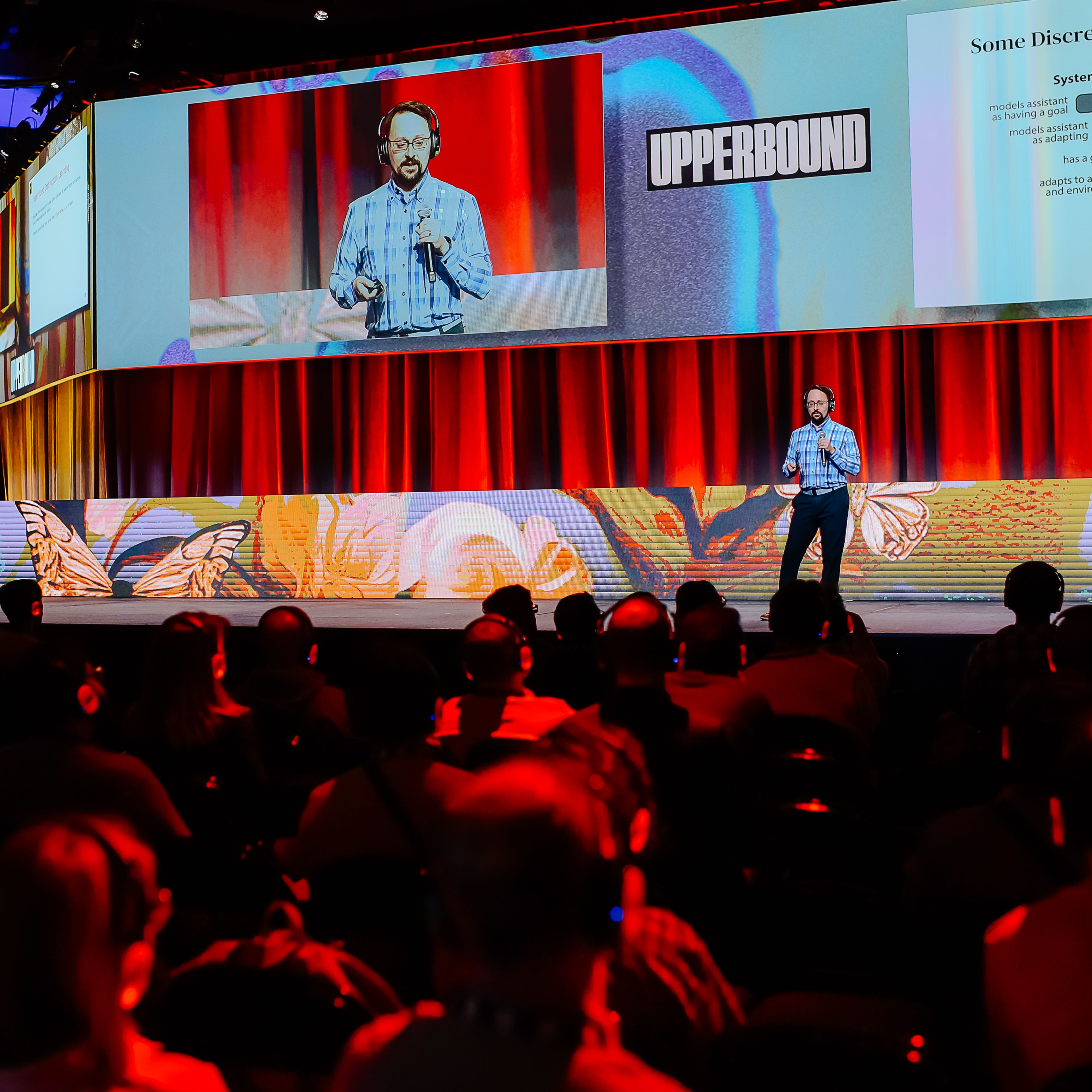Loading...
What if a robot could transport heavy materials across a construction site or whisk lab samples in a busy hospital?
Introducing mobile robots to our workplaces could have enormous benefits: they could take some of the heavy lifting, doing jobs that would risk injury to human beings, or handle basic tasks like delivering supplies to allow people to focus on more critical, complicated work
But, before we can enjoy the benefits of robots in the workplace, we need to learn how to do it safely, without causing collisions and other safety hazards.
In our first-ever live episode of Approximately Correct, recorded at the 2025 Upper Bound AI conference, we sat down with Mo Chen, Canada CIFAR AI Chair and professor at Simon Fraser University, to discuss how to build robots that can work safely and efficiently in human systems.
Humans know how to move in crowds intuitively, Chen explains, but getting robots to move safely in them is a tricky challenge. Unlike roads, which have clear rules for traffic, our indoor spaces—hallways, lobbies, and hospital corridors—operate on unwritten social codes.
"We kind of naturally know how to move about," Chen says, "so maybe there are rules, but they're kind of difficult to write down."
This makes programming a robot to navigate a bustling environment incredibly complex.
According to Chen, the answer is more adaptable systems that blend classical, rule-based AI with data-driven learning. It also means improving a machine’s robot's ability to assess risk and to recognize situations when it doesn’t know the right move to make.
"When they're in a situation that is unknown to them, they need to know that," Chen explains.
Chen also shares another project that his lab is working on - a follow-ahead robot, based on the idea of motorized luggage that can stay ahead of someone while travelling through a crowded airport. Chen dives into the challenges of creating a machine that not only follows a person but also anticipates and predicts their movements to stay ahead.
Solving these challenges will lead to robots that can move safely in human spaces, which would have massive potential in logistics, manufacturing, healthcare, and other sectors.
Listen to the full live interview with Mo Chen to dive deeper into the future of human-robot interaction here.
Approximately Correct: An AI Podcast from Amii is hosted by Alona Fyshe and Scott Lilwall. It is produced by Lynda Vang, with video production by Chris Onciul. Subscribe to the podcast on Apple Podcasts or Spotify.

Not Your Average AI Conference
Learn from Leading Minds in AI at Upper Bound
Be one of the thousands of AI professionals, researchers, business leaders, entrepreneurs, investors, and students in Edmonton this spring. Explore new ideas, challenge the status quo, and help shape a positive AI future.